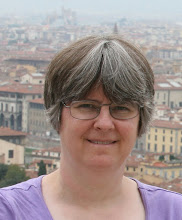Can't see the forest for the trees
.jpg) Sorry about the long silence. I was away for a few days without access to my computer, and this week I seem to have hit one of those bottlenecks that come up every so often in my life where all the things I committed to weeks ago (unaware they were all going to pile up on me in one week) converge. It's days like today when I sometimes feel I can't see the forest for the trees. I'm so focused on all the tasks on my to-do list that I need to get done that I forget why I'm doing it all. I need to step back and get some perspective.
Sorry about the long silence. I was away for a few days without access to my computer, and this week I seem to have hit one of those bottlenecks that come up every so often in my life where all the things I committed to weeks ago (unaware they were all going to pile up on me in one week) converge. It's days like today when I sometimes feel I can't see the forest for the trees. I'm so focused on all the tasks on my to-do list that I need to get done that I forget why I'm doing it all. I need to step back and get some perspective..jpg) However, the fact remains that on top of three other deadlines that are hitting me in the next few days, I just was reminded by a friend that she'd arranged for me to mount a solo photo exhibit in March at a local cafe in Vancouver. That means I now suddenly need to have 8-12 photos framed and ready to hang by Sunday or Monday! Eek! I knew it was coming up in March or April, but I was vague about the actual dates, and wasn't sure it was really a firm commitment I'd made. I guess it was. Oh well. Here come some late nights... And I probably won't be posting again here for another week. But hope to get back to some more regularity after that.
However, the fact remains that on top of three other deadlines that are hitting me in the next few days, I just was reminded by a friend that she'd arranged for me to mount a solo photo exhibit in March at a local cafe in Vancouver. That means I now suddenly need to have 8-12 photos framed and ready to hang by Sunday or Monday! Eek! I knew it was coming up in March or April, but I was vague about the actual dates, and wasn't sure it was really a firm commitment I'd made. I guess it was. Oh well. Here come some late nights... And I probably won't be posting again here for another week. But hope to get back to some more regularity after that.
.jpg)
.jpg)
.jpg)
.jpg)
.jpg)
.jpg)
.jpg)


